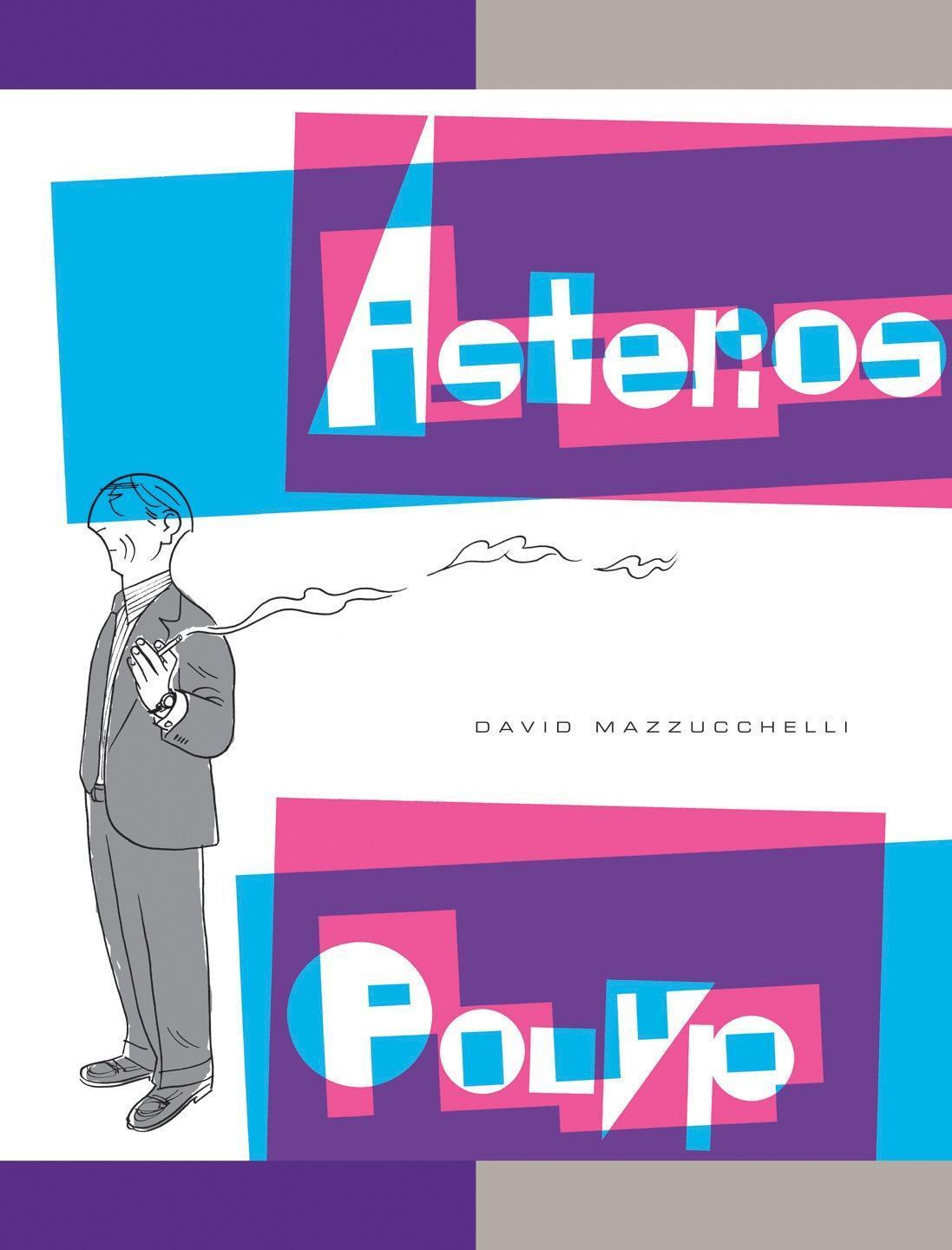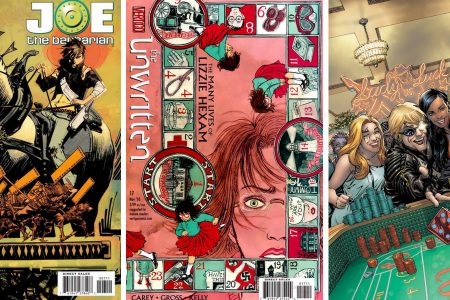By David Mazzucchelli
I recently joined City Library in London and it has been a treasure trove of new books that I wouldn’t normally get my hands on, and this has been one of them. This huge hardcover (344 pages – it was a heavy book to bring back home from the centre of town) from 2009 is the first in what will be quite a selection of the impressive catalogue.
This multi-award-winning book from Mazzucchelli (there’s a lovely quote on the back: ‘David Mazzucchelli has been making comics his whole life. This is his first graphic novel’) is a very impressive debut from a creator I know only from Daredevil: Reborn and Batman: Year One. It is also what I think of when I hear the phrase ‘graphic novel’ – not just a term adopted by booksellers and the comic book industry to legitimise the medium, but a literary novel with a non-genre story about the human condition that happens to be represented in pictorial form. Everything about this book is an exact marriage of words and pictures to convey the story.
Asterios Polyp is introduced to us at the age of 50 as his home burns down. He is a tenured professor of architecture, esteemed but whose designs have never been built. He was born an identical twin; his brother, Ignazio, died at birth and is the narrator of the story. Asterios is confident, superior, a philanderer and someone who doesn’t listen to anyone but himself. Having lost his home, he decides to take a train to nowhere and ends up working as a mechanic, even though he knows nothing about cars, in a small town called Apogee (‘the highest point in the development of something’, as the dictionary defines it). The story then flashes back to how he met his wife Hana, a sculpture teacher, and their life together and how Asterios ruined the marriage, with the modern story and the past intertwining, plus asides that take in Plato’s Symposium and architect theory.
This feels like a novel in the way that it is small but addresses big things, it is full of characters that are beautifully sketched out (in both senses of the word – Mazzucchelli depicts each character in an individual and distinct style, such as the side profile bust-like look for Asterios, and he expresses their character through dialogue and artistic shape in a masterful way). He experiments with ways of telling his story and his philosophical asides, with big bold images or small details, key panels with no borders or sprawling across the page, changing the form of people from normal to sketchy to geometrical shapes to charcoal-like – it allows him to filter moments so much more expressively than prose can do on its own, giving a new dimension to storytelling that is the essence of sequential art.
The story itself is not the type of thing I’d normally go for but I like to expand my horizons and it had received glowing reviews, and my decision was rewarded with an excellent graphic novel. It has some unusual aspects, such as people having the sort of intellectual conversations that you only read in books or hear in plays (at least in my life, and I went to university), and there are some annoying characters, like Willy Ilium the choreographer who wants to collaborate with Hanna (he’s supposed to be annoying but that doesn’t help), and Asterios is not a particularly likeable person. However, after finishing the story, you feel like you’ve experienced something, which must be exactly what an author is trying to do with his or her work, and Mazzucchelli should be commended for a job well done.




